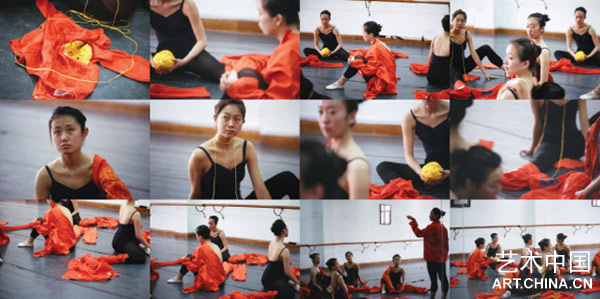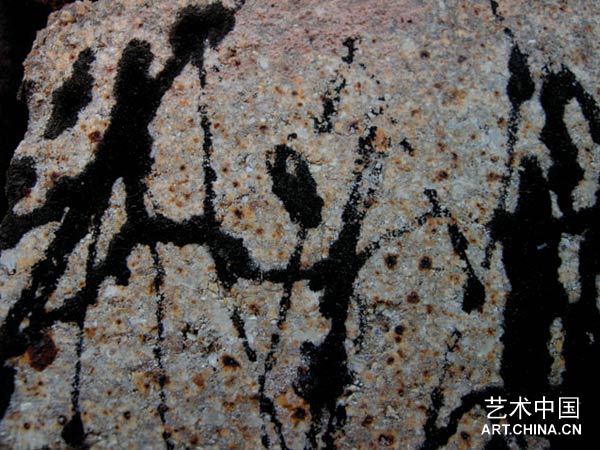 蒸发-黄色栅格Transpire-yellow grid
装置 混合媒介installation, mix media, dimension vary Rolf A. Kluenter2006-2008
蒸发-黄色栅格Transpire-yellow grid
装置 混合媒介installation, mix media, dimension vary Rolf A. Kluenter2006-2008
Our Life--2008当代艺术展
Our Life——2008 Contemporary Art Exhibition
策展人:吴文星
Curator: Wu Wenxing
艺术总监:杨邦本
Director: Yang Bangben
学术主持:蒋正根
Art Director: Jiang Zhenggen
执行:范文勇
Perform:Fan Wenyong
展览助理:朱秀琴
Assistant: Zhu Xiuqin
展期:2008年11月8日至2008年12月8日
Duration: 8th Nov. 2008 —— 8th Dec. 2008
开幕式:2008年11月8日(星期六)下午:18:30
Opening: Saturday, 8th Nov, 6.30pm
地点:文定生活创意中心 上海文定路204号,Wen Ding Plaza。
Venue: No.204 Wen Ding Road, Wen Ding Plaza.
参展艺术家Artists (按字母顺序):仇德树,陈心懋,丁乙,邓国源,管策,何塞邦,洪磊,Julia Lohmann,金江波,蒋正根,Paul Devautour,浦捷,Rolf A. Kluenter,苏新平,宋光智, Susanne Junker,谭根雄,唐添,王庆松,吴文星,颜磊
邮箱:wuwenxing2003@hotmail.com
 contryN0.66摄影Photograph 吴文星 2008
contryN0.66摄影Photograph 吴文星 2008
城市.生活.艺术
蒋正根
“文定生活创意中心”原是一坐旧式工业厂房,在它改建的过程中,设计者保留了原有的建筑形态和文化生态,如同北京的“798”与上海的“莫干山50号”一样,它们都有着那个年代曾有过的文化记忆。“莫干山50号”是上海目前最大的艺术创意园区,并成了上海城市的一个文化概念和文化符号。而“文定”的设计者有意将他们的新领地打造成上海又一个生活创意的新景区。
文化在当代城市的发展中是一个要素,也是一种产业。文化在其产业化的过程中除了创意还有一个重要的资源,即由历史形成的人文景象和人文符号。如同经济学家预测的那样:文化与经济共存演进将是未来经济增长的典型化趋势。由于文化在城市化进程中扮演的这种作用,所以让艺术与生活的自然融和,彰显城市文化性格将是我们一个时期内的文化策略。于是,一个称之谓Our Life的当代艺术展,将在这种融洽之中拉开它的帷幕。
此次展览在尊重艺术家本土意识和观念的前提下,以城市、生活、艺术为主旨,强调艺术作品的时代性与当下性以及艺术的个性与创造性;从而体现城市文化的性格,这就是此次展览的目的和意义所在。为了适宜展览的主旨和特性,参展的作品也以最具城市艺术特征的图片、影象、装置和当代绘画等为主。同时,此次展览也是跨界文化的艺术交流。
谈到当代艺术,我们一般泛指它学术上的前卫性和批判性外,在时间上主要指的就是发生在今天的艺术,在内涵上指的是它具有的某种时代精神和时代语言特征。当代艺术从本质上讲是城市文化的一种体现,因为当代艺术的生存与发展必须以城市为依托,城市是当代艺术的基础。我们回眸二十世纪现代艺术发展的过程就不难发现:城市与艺术的发展有着无法割舍的关联,城市生活强调的视觉特性和感官意识为现代艺术的发展提供了某种可能性。现代艺术史上所谓的立体主义绘画其实与城市的结构有着天然关联,未来主义艺术的产生与城市的运动和速度息息相关,而波普艺术的掀起显然与城市的商业要素和我们所处的复制时代有关。城市不但为现代艺术的发展提供了某种形态结构和形式语言,更重要的是它赋予了艺术家某种新的空间观、价值观和未来观。可以这么说,当代艺术的价值就在于它的这种当代性,而对城市文化的探索与表达就构成了当代艺术的一个重要特征。
其二,城市作为一个文化的地理概念,其所谓的社会属性是一个生物有机体的概念。如同生物有机体的生成和演化一样,城市也伴随着自身的繁衍、发展,以及在其历史变迁中不断积淀而生成为独立的城市文化。而当下席卷全球的城市化现象,已不是一个简单城市区域扩张和人们生活方式的急速改变。如同被命名为“快城快客”的上海第七届双年展那样,一个“快”字反映的却是一个城市在其现代化进程中整体形态的急剧演变,以及它快速中的多变性和不确定性。然而,对城市形态及其趋向不确定性的探索正是当代艺术所面临的任务和职责;同样,当代艺术发展的不可知性,也是城市发展的复杂性在其文化形态上的自然反应。艺术家置身于这个时代,其作品理应反映和表现它。艺术只有不断地在与城市的交流与碰撞中达到情感的共鸣与相互认可,从而自身得到不断地完善,这样我们的城市文化才得以创新和发展。事实上在城市化的进程中,艺术的兴衰和艺术家的状态总是与城市的发展息息相关的,上个世纪五、六十年代“纽约画派”(也称抽象表现主义)的兴盛正是得益于欧洲大批艺术精英的迁入和美国城市文化的强盛。中国当代艺术从地下与边缘迅速成为今日的主流艺术,其中只用了十几年的时间,这源自中国城市经济的迅速发达和城市资本的大量介入。所以,不管是早年的巴黎,还是以后的纽约,以及时至今日的“798”或“莫干山”莫不如此。这是因为城市不仅是一种人文景观,或某种文化与信息的中心,重要的是它体现了一种生命的存在与生存状态。
其三,城市又是一个具有世界性概念的符号。当代艺术之所以能跨地区、跨疆域和跨文化的交流,就得益于当代城市文化的存在。此次展览邀请的二十位中外艺术家来自不同的城市。这些有着不同文化背景的艺术家都是活跃在当代艺术前沿,在学术上有着相当建树的优秀艺术家,其中不乏参加过威尼斯双年展,且享誉当今国际画坛的艺术家。虽然这些艺术家的艺术观念有着各自的差异,个人的艺术语言也不尽相同,但他们却相聚在一起。这其中有来自上海的仇德树,陈心懋,丁乙,何赛邦,蒋正根,浦捷,谭根雄,吴文星和唐添;来自北京和天津的王庆松、颜磊、金江波和邓国源;来自广州、南京和常州的宋光智、管策和洪磊;以及来自德国和法国的尤莉亚.洛曼Julia Lohmann,柯罗夫,Rolf A. Kluenter,云筱苏Susanne Junker和保罗.德沃图Paul Devauou等艺术家。这些艺术家有常年蛰居在这个城市的,有曾经生活在某个城市如今却客居京城的,还有来自异国他乡却对这个城市充满向往而行走在两地的。他们平静地生活在各自的城市,恪守着自己的创作原则;用他们纯熟的语言进行着当代艺术的实践和创造,用他们的作品诉说着生命与生存的关系。这些艺术家立足于对现代城市的探索和表达,并以他们的实践给今日艺术的发展提供了一种多样性的可能。他们的文化态度和追求也体现了在艺术全球化潮流下,城市艺术的多极形态和艺术家的艺术状态。笔者以为,当代艺术作为人类创造力的一种特殊形态,是其自身所包涵的城市文化特性让不同种族和信仰的艺术家走到了一起,这也从某个侧面反映了当代城市文化所具有的包容性和宽泛性的特征。
二十一世纪的城市属于文化的城市。城市文化既是城市的个性表达,也是城市集体意识在当代语境中的抽象呈现。城市文化的核心内力在它自身的进程中,启动了人们内在的文化需要,并引领着信息与资金、人才与资源、时尚与消费的文化风尚。然而,现实中的文化却渗透在生活的各级形态之中,而且需要借助这种形态的呈现演绎成一种精神的载体;而由艺术构成的文化生态就催生了城市文化符号的诞生,通过它我们就能感悟到遁隐在城市背后的历史文脉,以及由此形成的城市性格;通过它我们还能从中观照到自己。所以当代艺术不应该是简单、晦涩的哲学概念的表达,而应把对普遍人性的关注放在其表达的首位。因为,一个脱离了人文思想和人文情怀的艺术是没有灵魂的艺术,同样,这样的城市也是没有灵魂的城市。
城市是美好的,今天,城市似乎成了人们生活的一个方式和希望,也似乎成了生命的一种归宿。
2008年10月于浦江东岸
 Studio Yoon-Ja & Paul Devautour 装置Device Paul Devautour 2001
Studio Yoon-Ja & Paul Devautour 装置Device Paul Devautour 2001
City.Life.Art
Jiang zhenggen
The original structure of Wending Living Style Plaza is an old factory. In the process of rebuilding, the original frame has been left. Same as the “798”of Beijing and “No 50 of Moganshan”,they all have the culture memory in that times. The“No 50 of Moganshan” is the biggest art originality garden at present, and it also becomes a culture concept and symbol of shanghai. While the designer of Wending intentionally to build a new living style plaza in Shanghai.
Culture is an important factor as well as an industry during the development of contemporary city. In the process of industrialization, culture has an important resource besides creation, which is human landscape and symbol formed by history. As what economist predicted, culture and economic coexistence and development is a typification trend of future economic increase. Because of this function of culture in the process of civilization, our culture strategy in a period is to display city’s culture character. So a contemporary art named “our life” is going to open in the atmosphere of harmonization.
On the premise of respecting artist’s consciousness and concept, based on the city, life and art, emphasizing time and present character of work of art, and personality and creativity of art, the intention of this exhibit is to embody the character of city culture. In order to correspond to the lemma and characteristic of this exhibit, the main works on the exhibit are picture, video, installation and contemporary painting with the furthest city art character. Meanwhile, this exhibit is an across-culture art exchange.
Speaking of the contemporary art, which generally refers to avant-garde and critical academically, happening at present and containing modern spirit and language character. Contemporary art is essentially a sort of embodiment of city life. Its existence and development must rely on city, so city are the base of contemporary art. Looking back the process of modern art development in the past 100 years, we will easily find that the connection of cities and art development cannot be separated. The vision characteristic and sense consciousness emphasized by city life provide the possibility for development of modern life. The solidism painting of contemporary art history actually connected with city organization naturally. The generation of futurism art is closely linked the rate of city’s transformation, while the start of Bopu art is obviously related to the city’s business factors and our living copy times. City not only provide some configuration structure and format language for the contemporary art, the important is that it endow the artist with space, value and future view. It can be say that the value of contemporary art is because it happened today, while the exploring and expression of the city life formed an important character of contemporary art.
Second, as a concept of culture geographic, the community property of city is also a concept of organism. Just as the evolution of organism, city evolves into an independent city culture with its reproduction, development and accumulation during historical changes. Regional expansion of a city and rapidly life style changing is not a global city phenomenon.
As the theme of Shanghai 7th Biennial– fast city fast people, the word “fast” reflects city’s overall shape in rapid evolution during the process of modernization and its variability and uncertainty. However, the tasks and responsibilities contemporary arts facing right now are the exploration of city patterns and the tendency of uncertainty. Meanwhile, unsuspected development of contemporary arts is also a nature reaction in its culture pattern during the complicated city growth, which is reflected and displayed in modern artists’ works. With the continuing communication and exchange, arts would reach emotional resonance and mutual recognition so as to get self-development, thus city culture could grow and innovate. In fact, during the process of urbanization, the rise and fall of arts and the state of artists closely interrelated to city development. In 1950s and 1960s, the prosperous of New York School (also known as abstract expressionism) profits from the immigration of a large number of European elites and American urban cultural prosperity. It only cost more than a decade for Chinese contemporary arts to develop from edge and alien to mainstream arts, as numerous urban capital is involved. Therefore, no matter the early years in Paris or later years in New York, as well as today’s 789 and Moganshan, they all share the same concept. City is not only a human landscape or the center of culture and information but also reflects the existence of life and the state of living.
Third, city is also a symbol which carries the worldwide concept. Contemporary arts are able to communicate by crossing regions, territories and culture as the existence of contemporary cities. Twenty arties are invited to this exhibition are from different cities. They are all outstanding artists from varies culture backgrounds still actively play on contemporary arts stage and make considerable contribution on academic field. Some of the artists attended Venice Biennale and world-renowned in contemporary arts. These artists gather together in spite of varied art concept and language. Among them, Qiu deshu, Chen xinmeng, Ding yi, He saibang, Jiang zhenggen, Pu jian, Tang genxiong, Wu wenxing and Tang tian are from Shanghai; Song Xinping, Wang qinsong, Yan lei, Jing jingbo and Deng guoyuan are from Beijing and Tianjing; Song guangzhi, Guan ce and Hong lei are from Guangzhou, Nanjing and Changzhou as well as Julia Lohmannas, Rolf A. Kluenter, Susanne Junke and Paul Devauou are from Germany and France. Some of these artists lived in the city for years, and some who used to live in cities now live in Beijing once in a while, others who from abroad travel back and forth between Shanghai and Beijing as they are attracted to this city. They are living their life peacefully and following their art principle strictly. With sophisticated language and works, they are carrying on their practice and creative in contemporary arts and tell the relationship between life and severance. These artists base themselves on the exploration and expression of modern cities and provide varied possibility of contemporary arts development by their practice. Their culture attitude and pursuit reflect the multiple patterns of city arts and artists’ status under the trend of art globalization. In writer’s opinion, as contemporary art is a special pattern of human creativity, which include culture characteristic of cities gather artists from different race and belief together. At certain point, it also reflects the containment and broadness of modern city culture.
The city in 21st century is called culture city. City culture is not only the characteristic expression of city but also abstract presentation in context of group consciousness of city. The centre of city culture is in its process which rouses the culture desire inside of people and leads the culture trend of information and capital, talents and resource, fashion and consumption. However, culture in real life permeates in all levels of life; also, it needs the presentation of these levels to deduce a certain spiritual carrier. Culture ecology formed by arts procures the birth of culture symbol. We understand the culture context concealed behind history and characteristic of city and observe ourselves through culture ecology. Therefore, contemporary arts shouldn’t be simple and obscure philosophy expression, which should be the primacy in the expression of general human nature. Because arts separate from humanistic minds and feelings are arts without soul. Also, such city is city without soul.
City is wonderful. Nowadays, city seems has become a way of living and hopes, and also destination of life.
East of Huangpu River on Oct,2008
|

